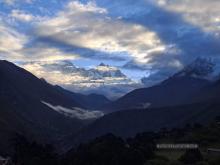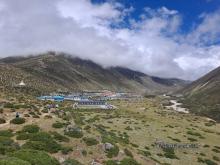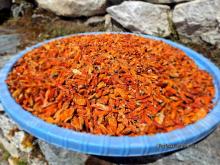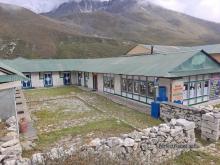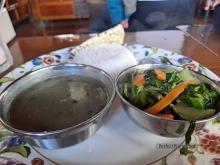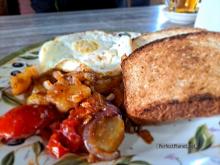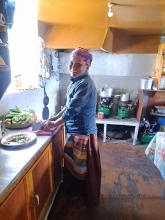Today's stage takes us from Tengboche (3,860m) to Dingboche (4,318m).

Sunrise at Tengboche
Watching the sunrise from the room with these views of Everest and Lhotse is a real luxury, the Ama Dablam is still hanging in the clouds.
Itinerary: Tengboche (3,860 metres) - Deboche - Pangboche - Shomare - Dingboche (4,318 metres)
Distance: 11 kms
Duration: 6 hours
Linear route
Difference in altitude: 550 metres
Tips for good acclimatisation. Good acclimatisation is achieved by drinking plenty of water, walking slowly without getting tired, not climbing more than 500 metres per stage above 3,400 metres and always sleeping below the maximum altitude you have reached that day.
Always remember to take enough water with you, as it takes at least half an hour for the pill to take effect. Sun cream with full protection is essential. Batteries run down in the cold, so put them inside your sleeping bag.
Map
Today it is quite clear and we can enjoy the mountains that were covered yesterday, such as the Kangtega or those behind the monastery.
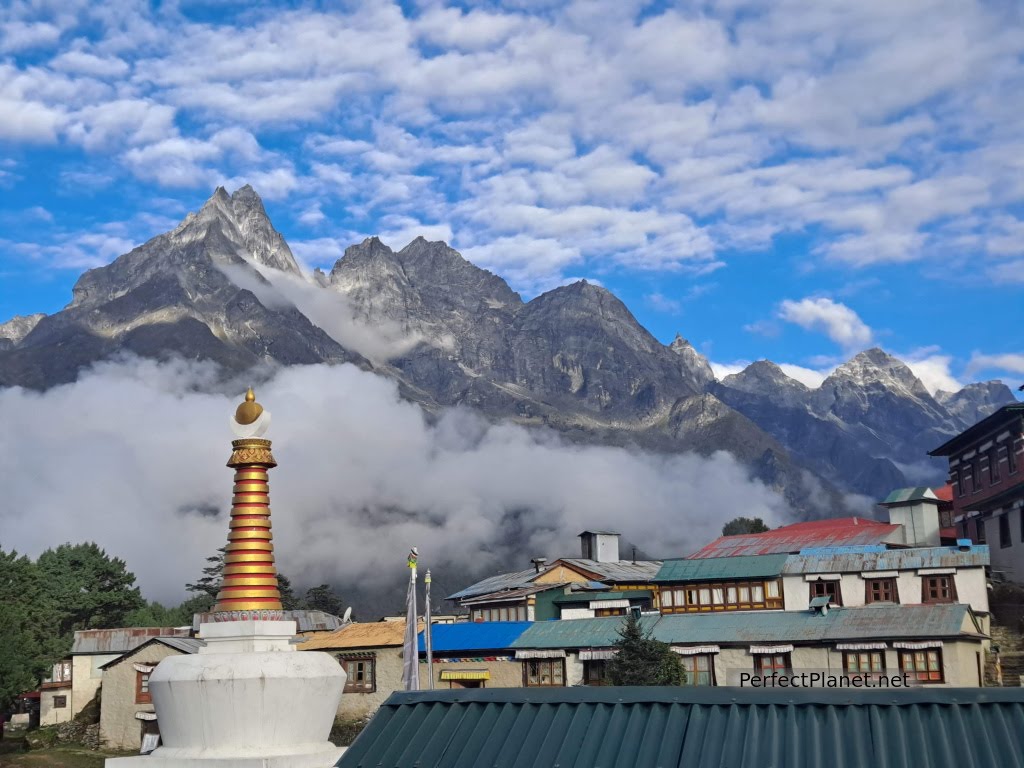
Monastery
After a comforting breakfast of eggs with toast and stewed potatoes we set off.
We are a bit annoyed with the accommodation regulations that do not allow our porter Chiiring to stay with us when there is enough room. Unfortunately, the work of the porters is not sufficiently valued, as they are paid very little and often have to sleep in the porters' houses in overcrowded, unhygienic conditions and sometimes without food.
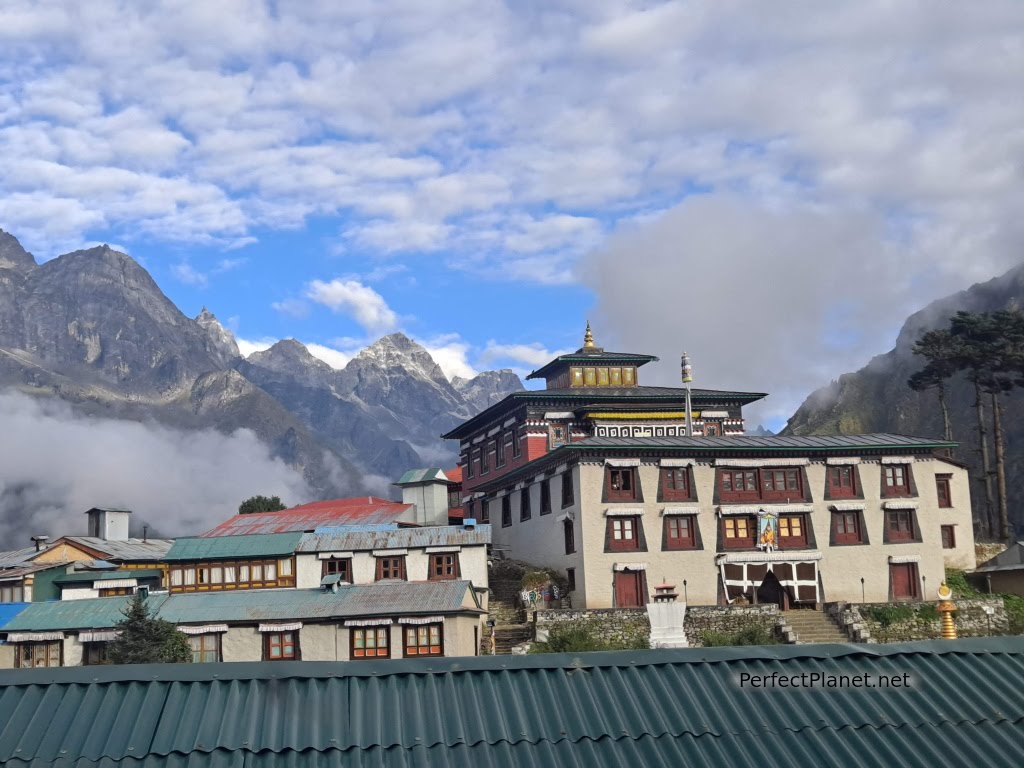
Monastery
Ten minutes after leaving Deboche we meet María and Sergio and we walk and chat. This first stretch descends through a rhododendron forest until we reach the first suspension bridge of the day.
We continue walking parallel to the river towards Pangboche. Here we find Miguel relaxing with a cup of tea. He has not brought any water purification tablets with him and we share a few with him.
In Pangboche you can visit the oldest Tibetan monastery in the area, for which you have to take a twenty minute detour.
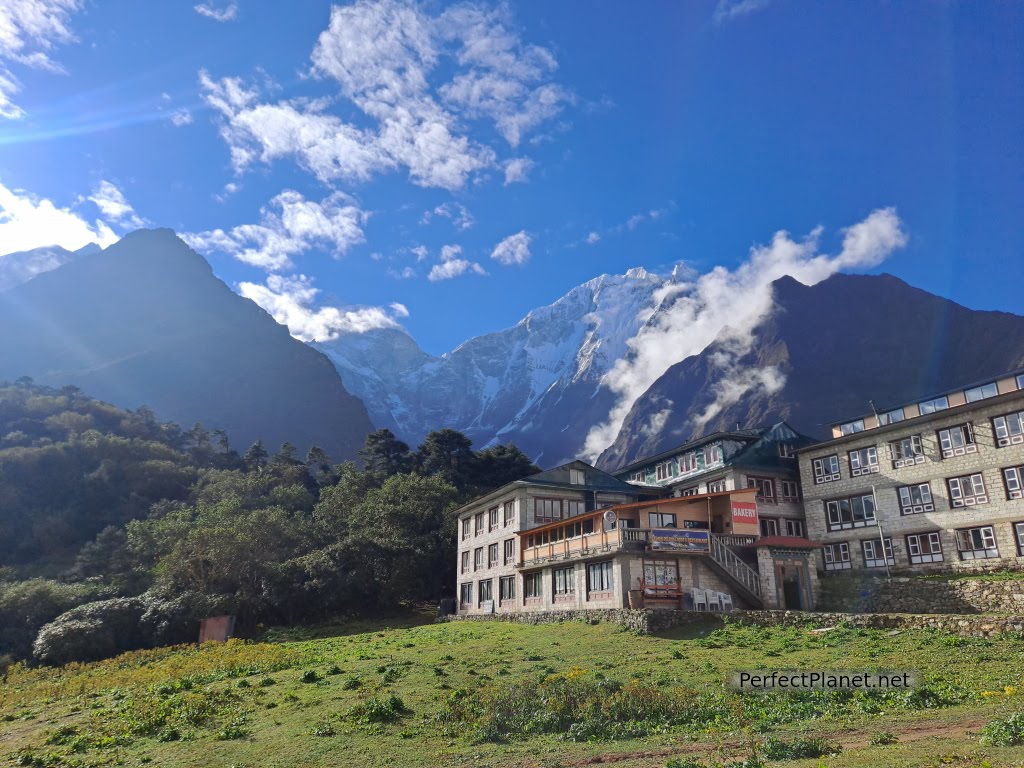
Tengboche
The road is quite steep until we reach Shomare, where we have lunch. The views of the Ama Dablam are magnificent, the pity is that we don't see it completely uncovered.
At this point the landscape changes completely, leaving behind the dense forests that give way to a more arid landscape with smaller vegetation and the first yaks.
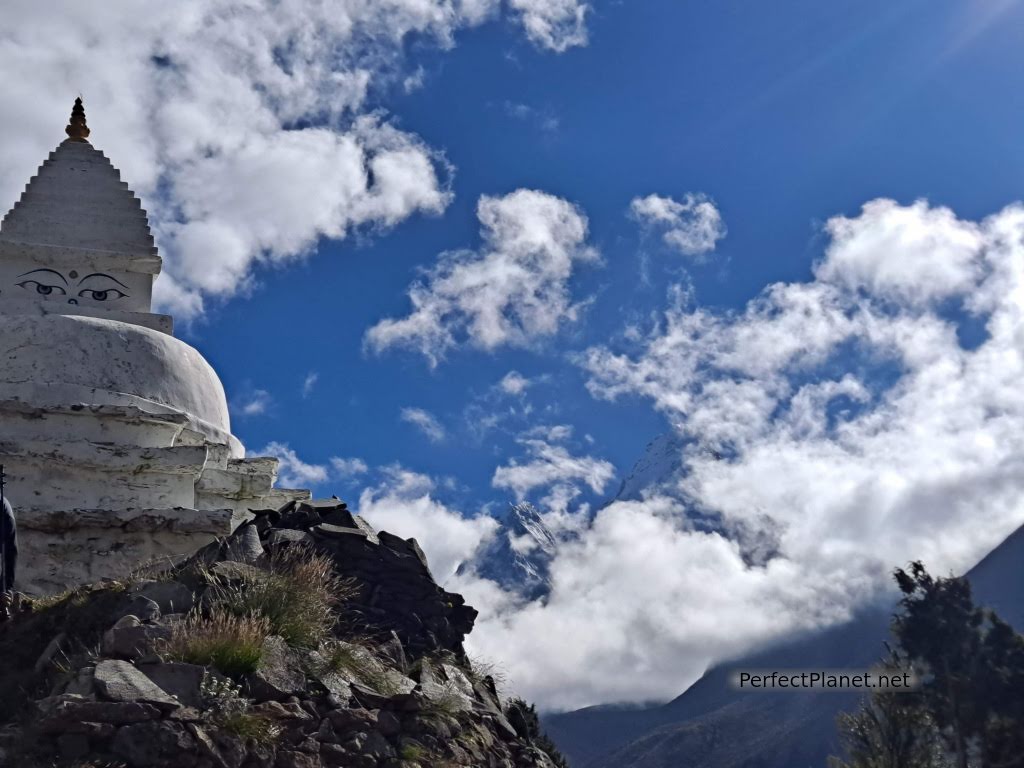
Stupa
We eat at Juneli lodge and restaurant, dal bhat and sherpa stew, although it is included in the price of our trek, we are struck by how the prices go up with the altitude.
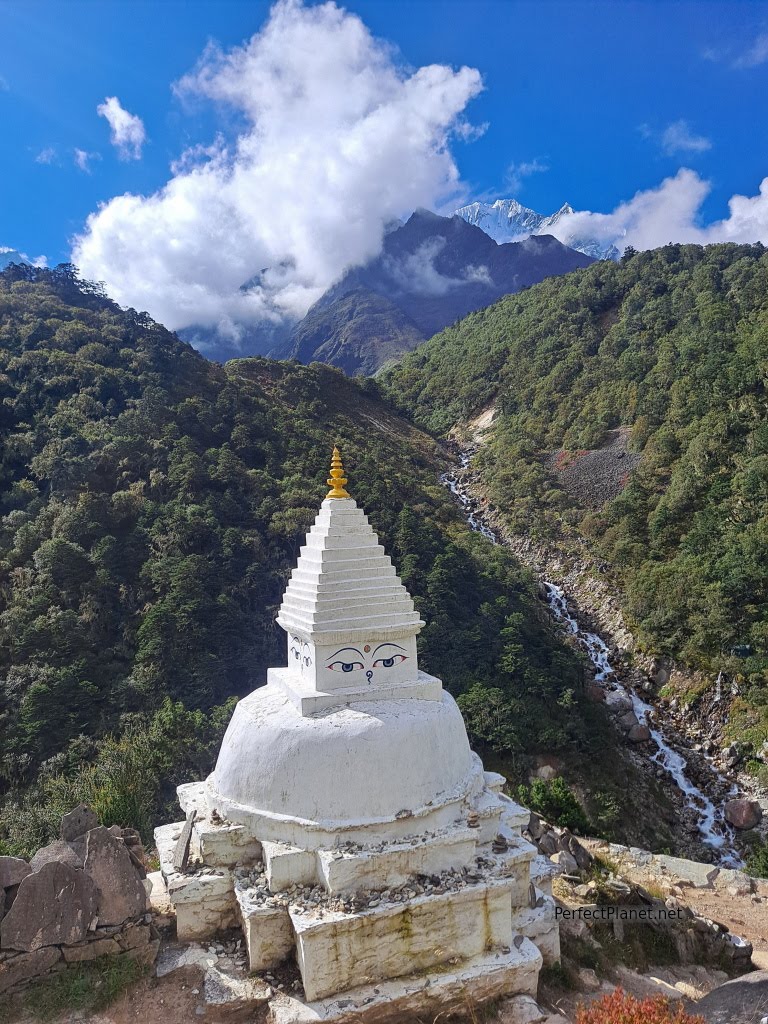
Stupa
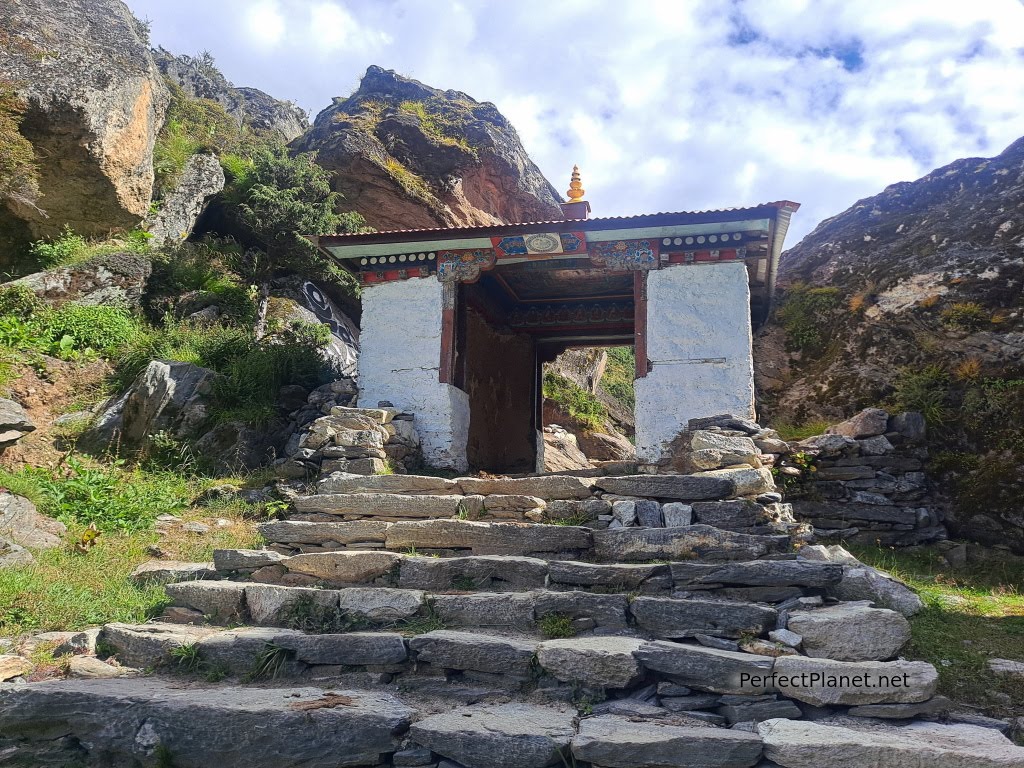
Way to Dingboche
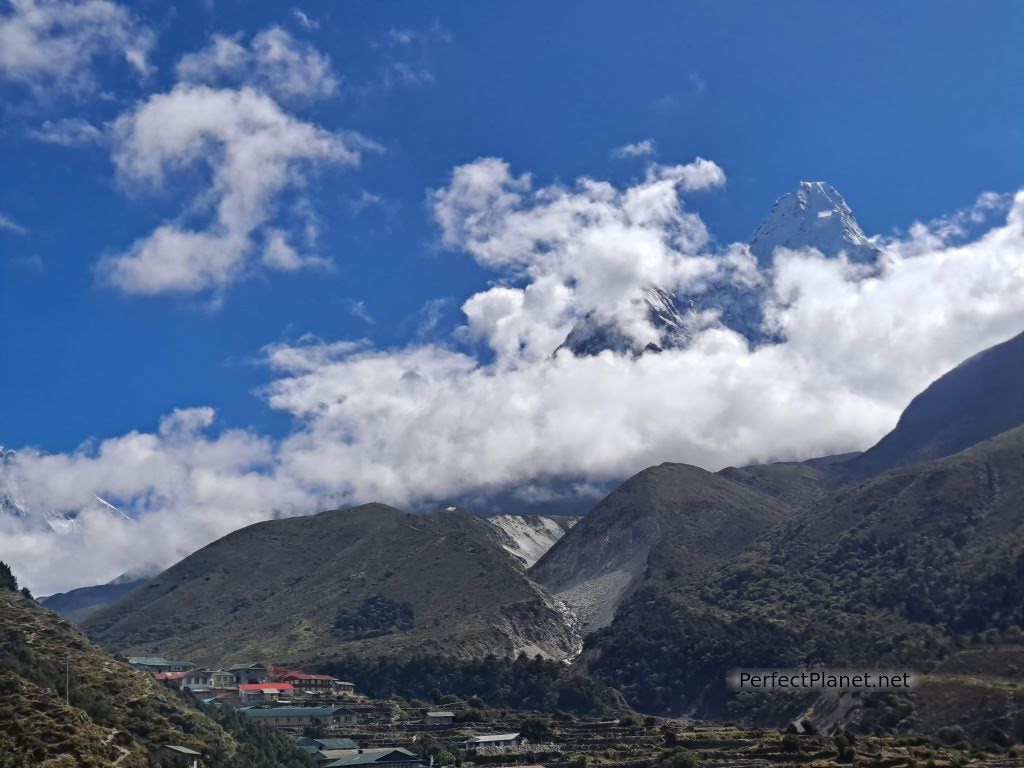
Ama Dablam
Outside they have a kind of solar oven to heat water and take advantage of the sun's heat. Nice invention.
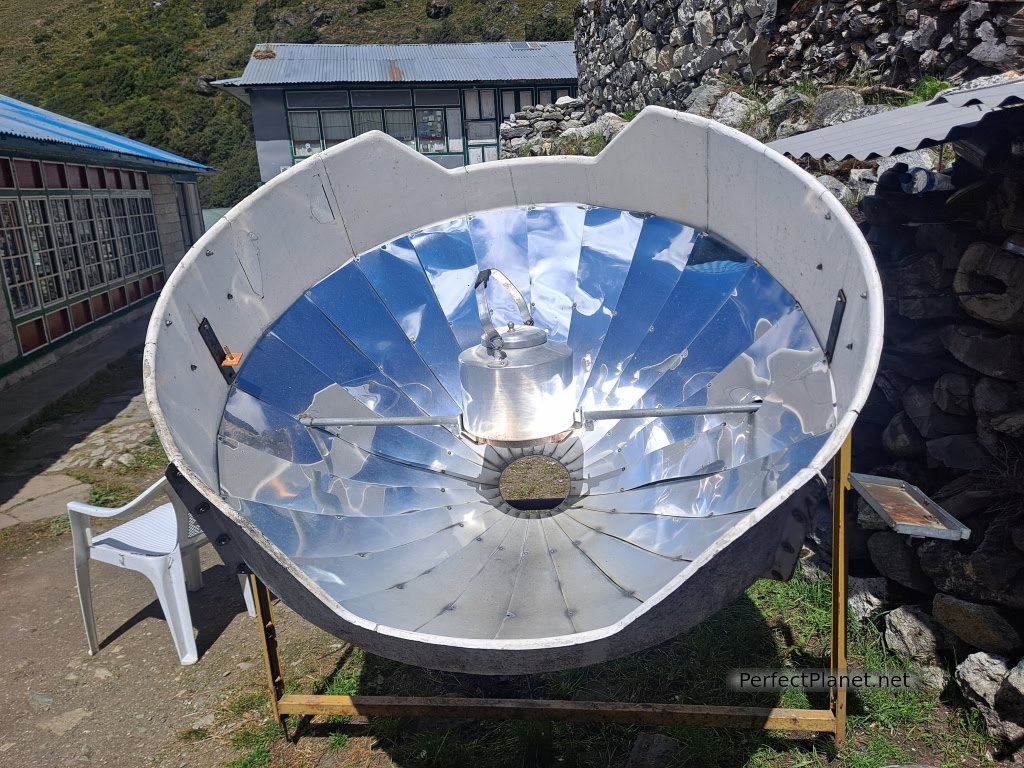
Sun´s heat
We start walking again, the wind starts to get quite uncomfortable and cold, so we cover our heads. Sonam advises us that if the wind blows from behind we should cover the back of our heads and if it blows from the front and we are not able to breathe through our noses we should cover our mouths to prevent the cold air from entering our lungs and making us sick.
We reach a suspension bridge again, cross it and face the last climb up to Dingboche, at the foot of Ama Dablam, which is still not fully visible.
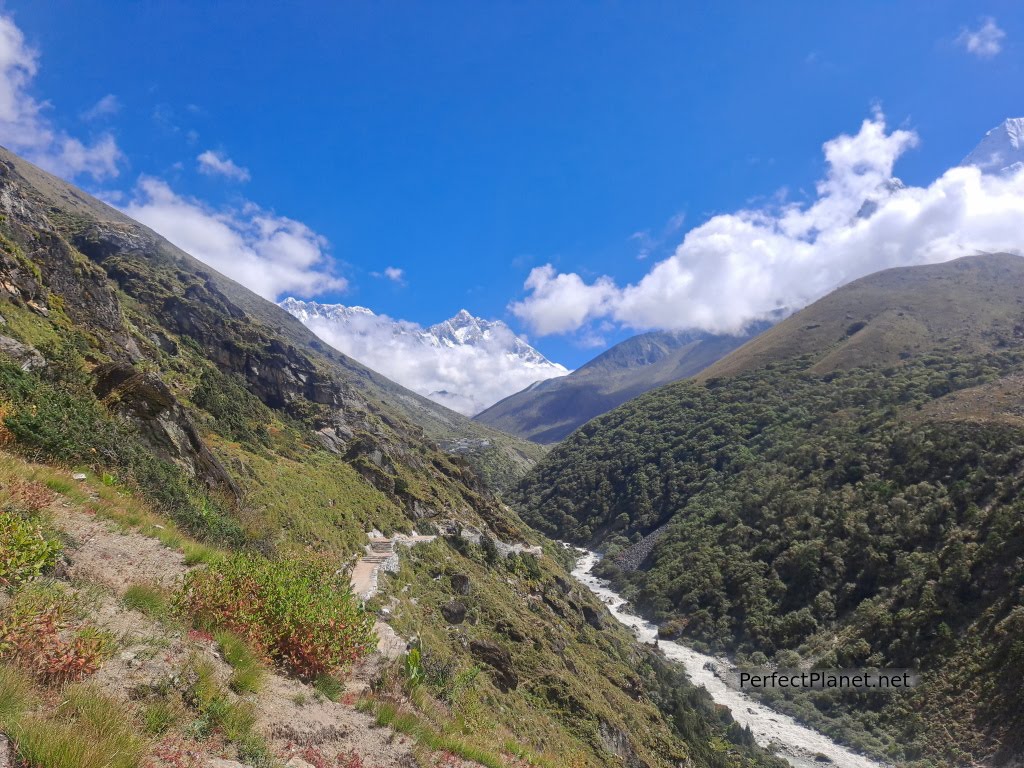
Way to Dingboche
We are surprised by the size of Dingboche, which is larger than the towns we have passed through before.
Mostly made up of lodges and cafes to accommodate the traveller, in Dingboche, local families do not live here all year round, only during the trekking period, like the Sonam family where we are staying today, who rent the lodge during the high season.
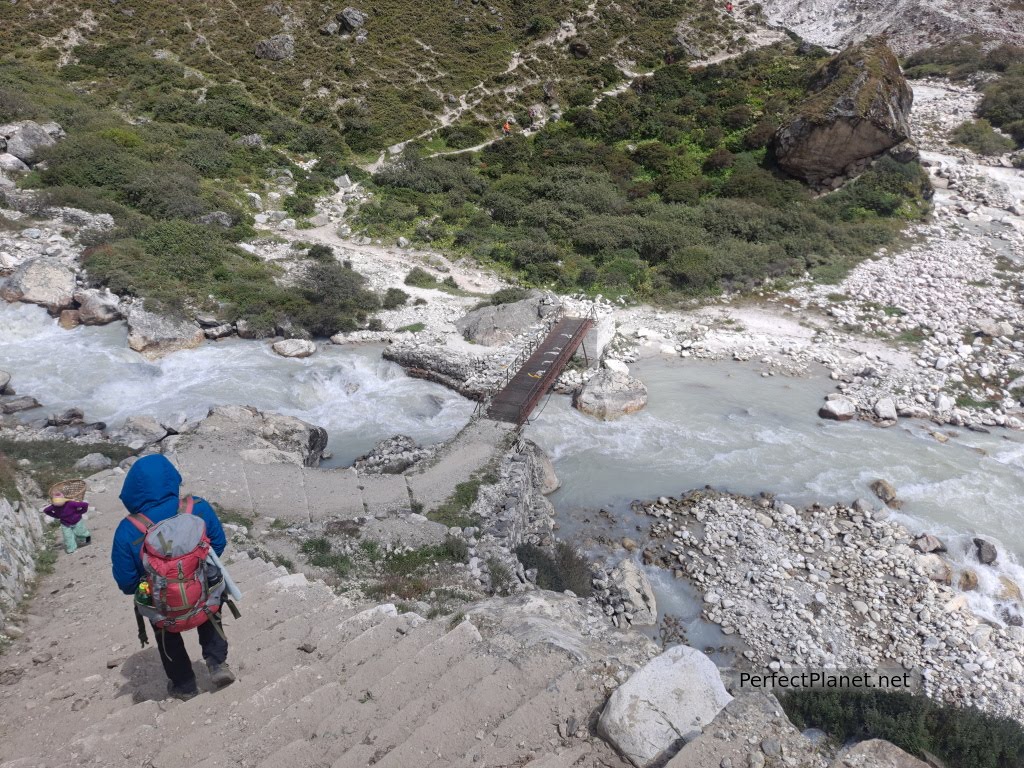
Bridge
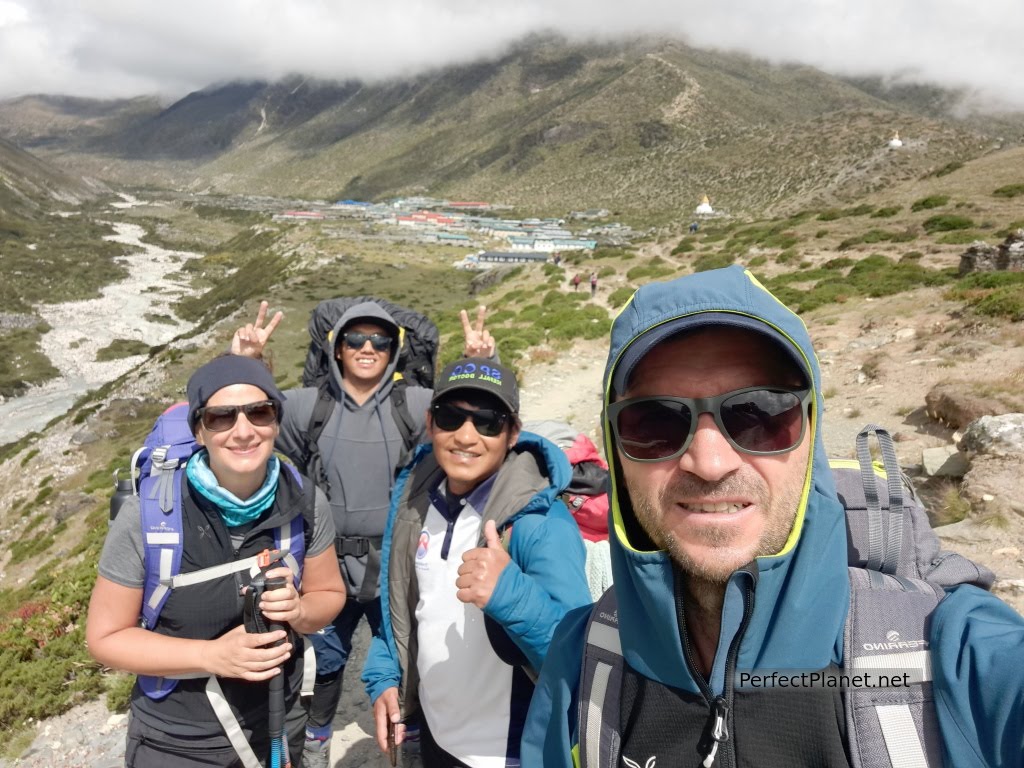
With Sonam and Chiiring
In the old days, black barley was grown on this land, but nowadays it is no longer cultivated, but they grow their own potatoes and vegetables.
We stayed at Sherpa Land Lodge. Sonam has got us a room with a bathroom, what a joy because the shared bathroom is outside in the street and if you have to get up in the night you freeze to death.
We do the laundry of the smaller things and the rest we give to Sonam's aunt to wash for us. We wash at the back of the house where there is an area with a washing line where the sun shines beautifully.
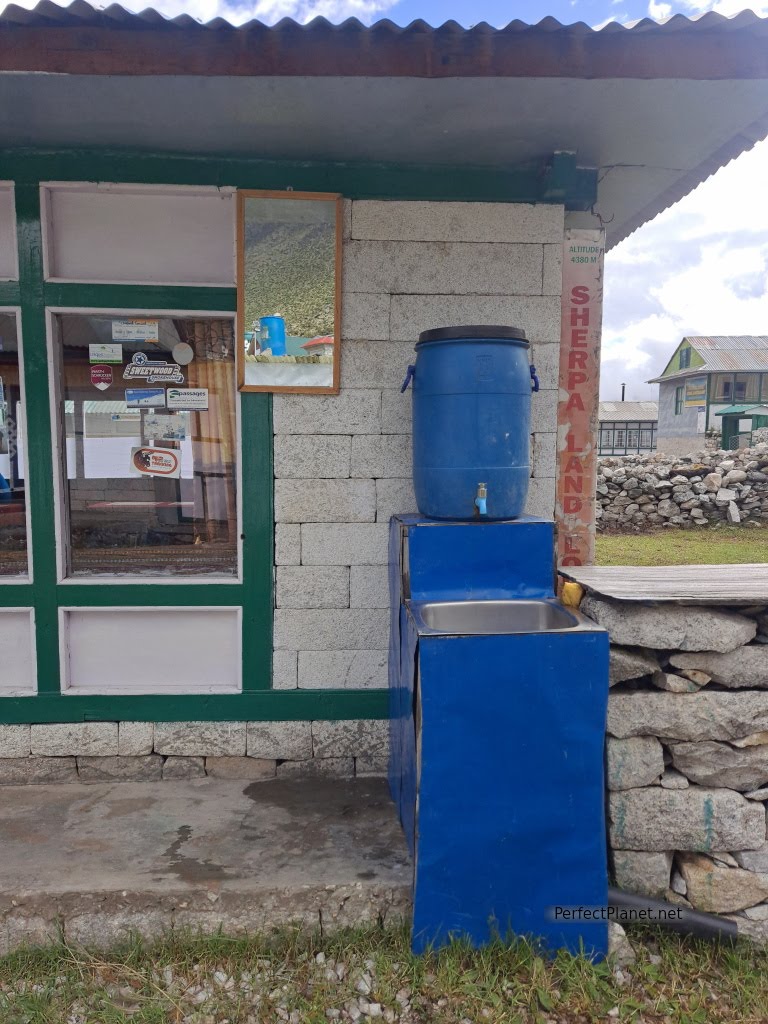
Our washbasin
We walk around Dingboche to get to know it better, we walk for a few minutes via Chukhung, a village near the base camp of Island Peak, while we watch how they collect potatoes and grass for the animals.
At 6.30 we have dinner. Rare noodle soup with vegetables (it's a type of noodle) and momos with mint tea. Thank goodness they have lit the cooker, they load it with dried yak droppings that they have previously dried in the sun and a little paraffin with which you have to be careful because it backfires and gives off a flame that almost burns our fringe. Total use of resources.

Way to Chukung
We chat with another Indian traveller who is also staying with us. Tomorrow he leaves for Lobuche without acclimatising because he says he doesn't have enough days. It is essential to acclimatise well in order to finish the trek in good condition, so don't gamble with it.
Go to bed early because it's already starting to get quite cold at night.
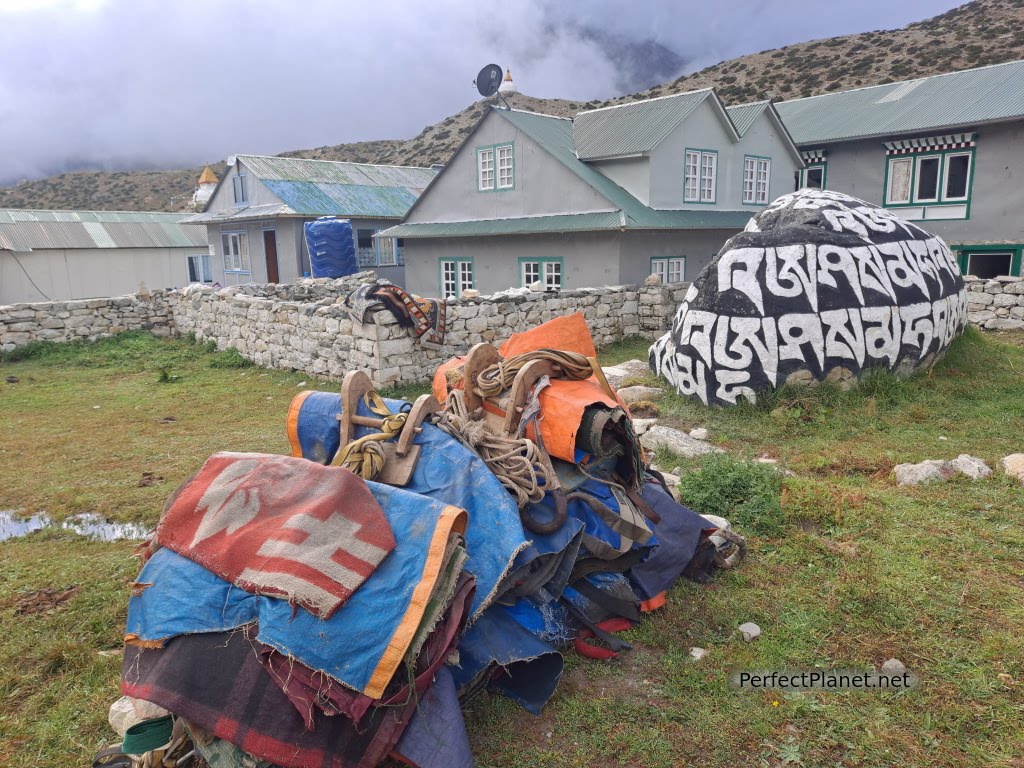
Dingboche
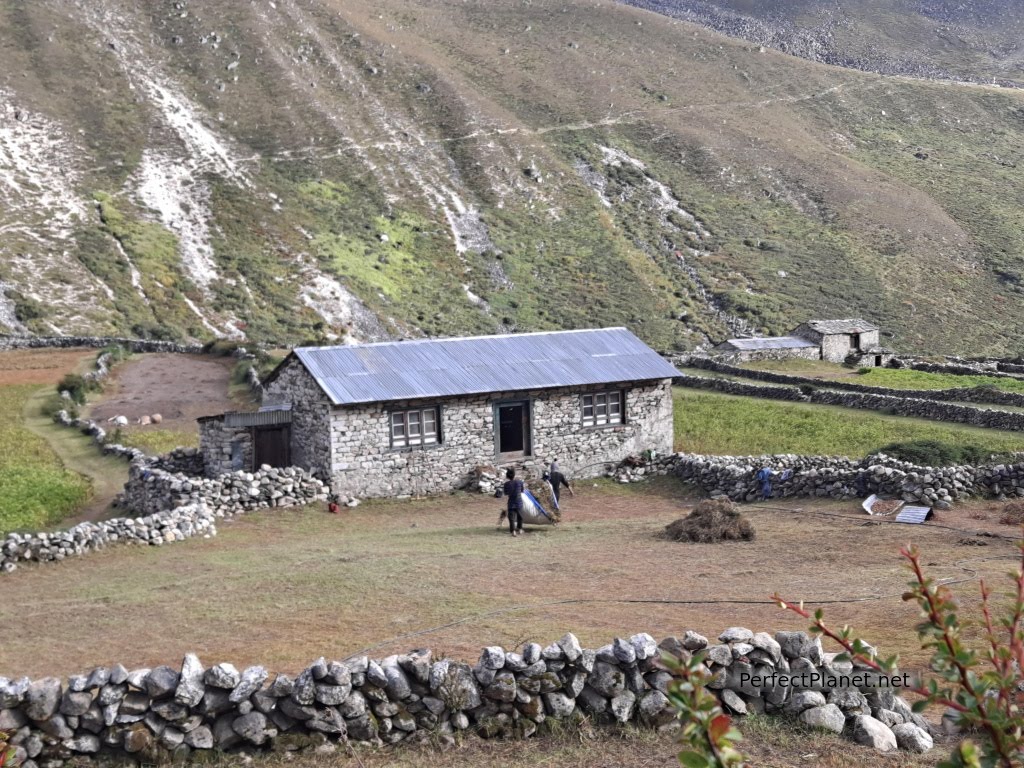
Dingboche
Breakfast at Himalaya Inn included, eggs with toast and potato stew
Lunch in Shomare at Juneli lodge restaurant, stew sherpa 700 rupees and dal bhat veg 800 rupees
Overnight stay and dinner at Sherpa Land lodge, including rare noodle soup and potato & cheese momos
Recharge mobile phone 500 rupees/piece, we negotiate the price of the battery because it is only one charge, we get it for 500 rupees.
Laundry: 200 rupees / piece
Wifi 500 rupees/day
- Log in to post comments

